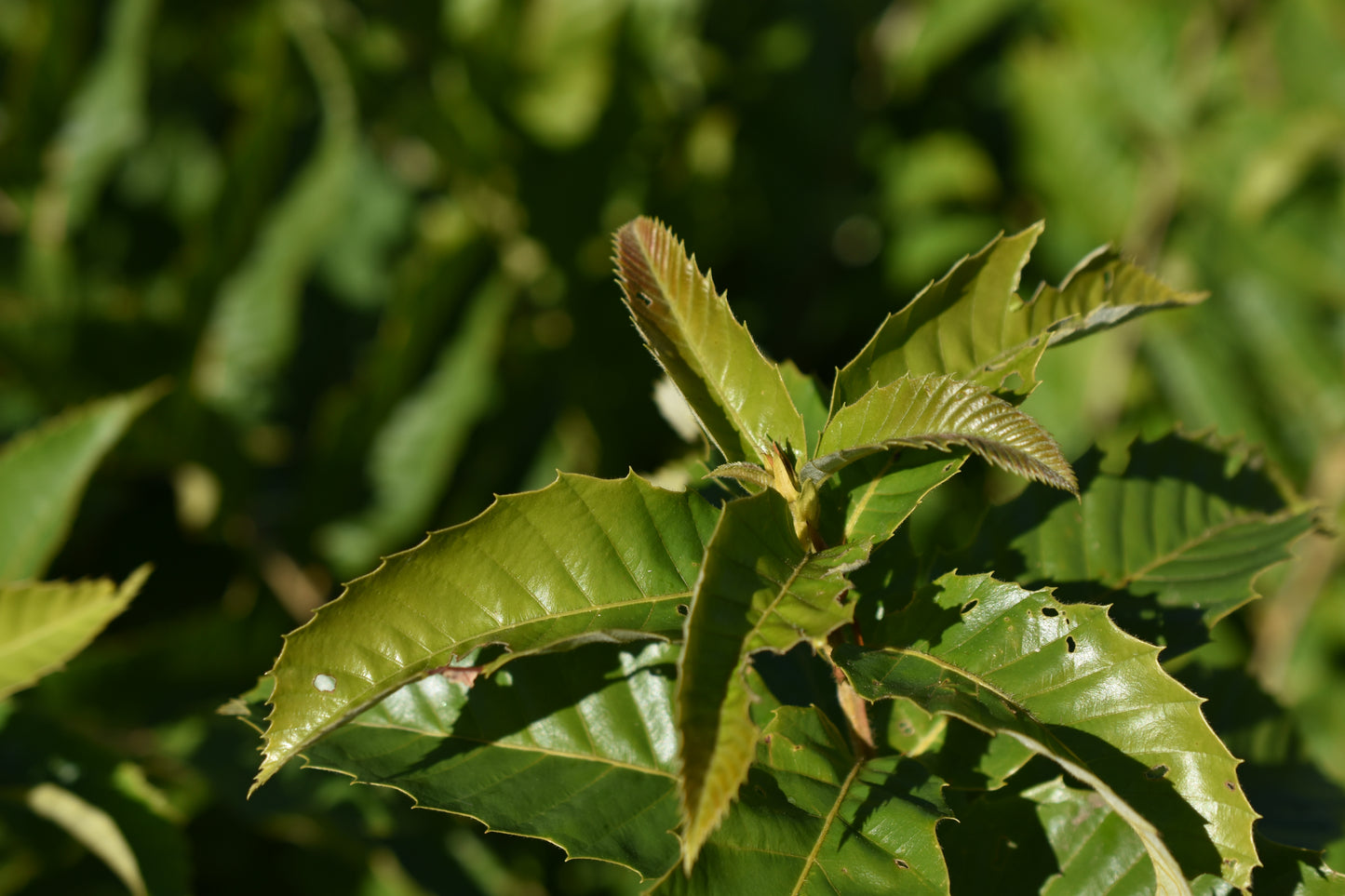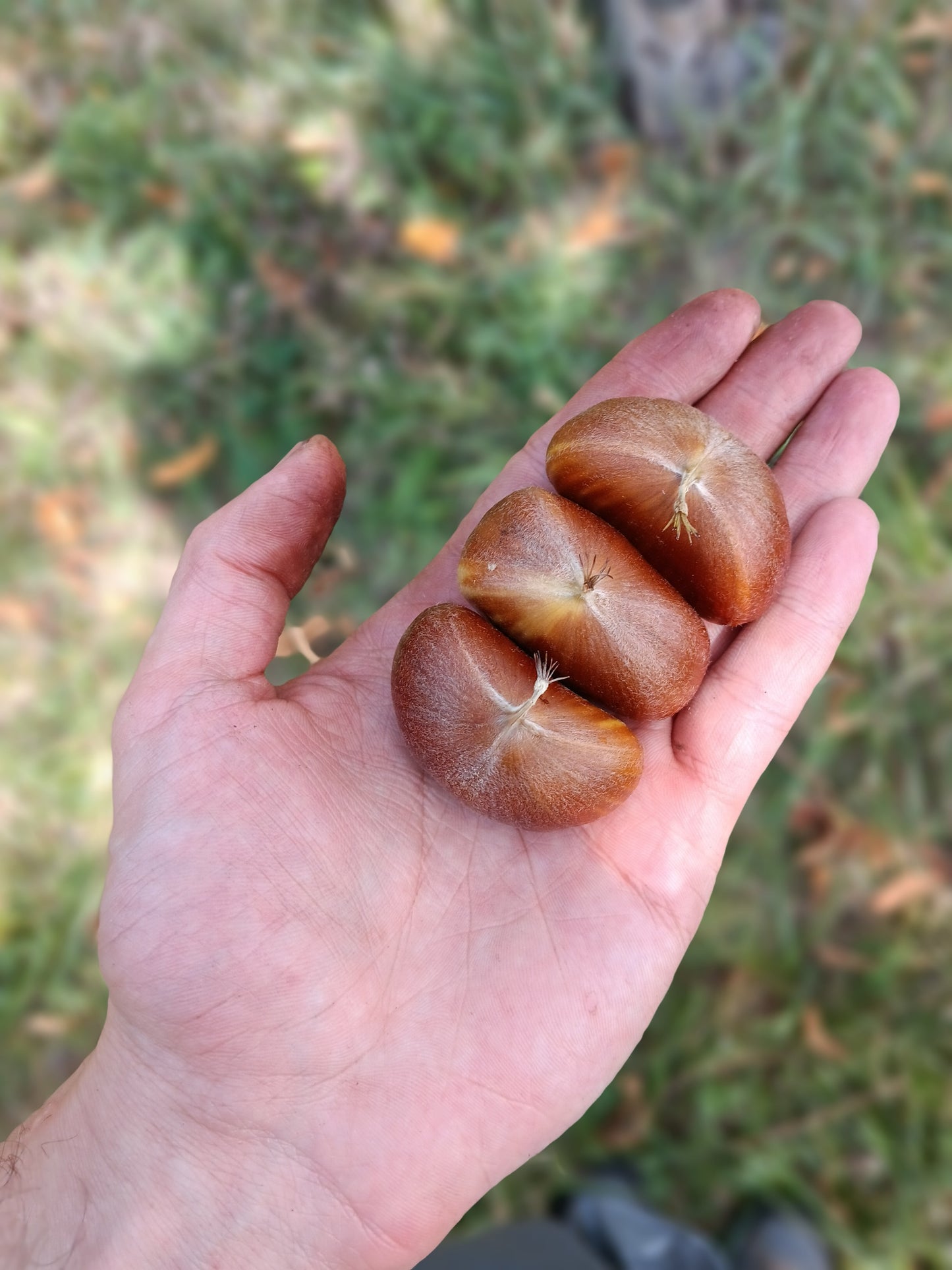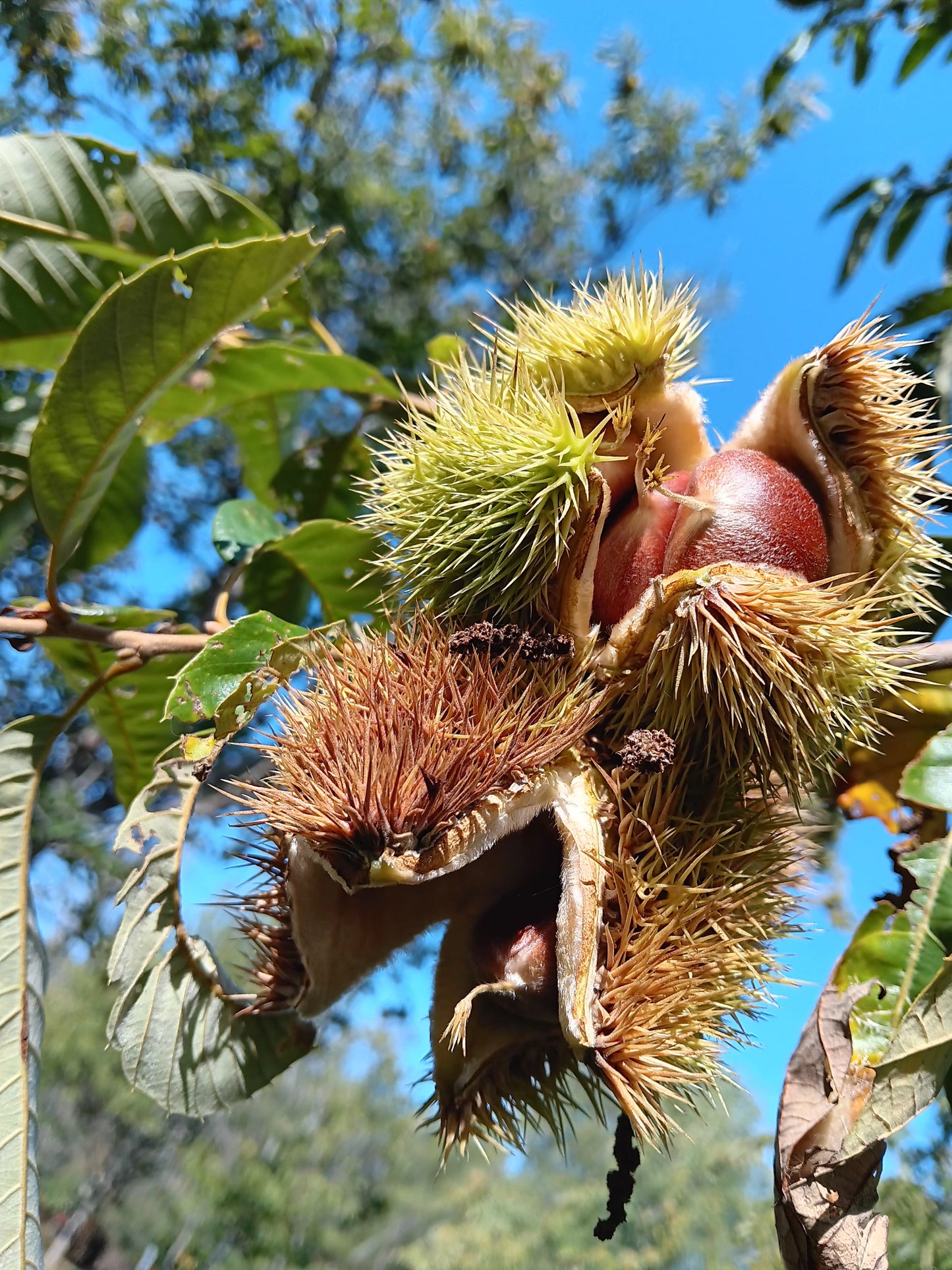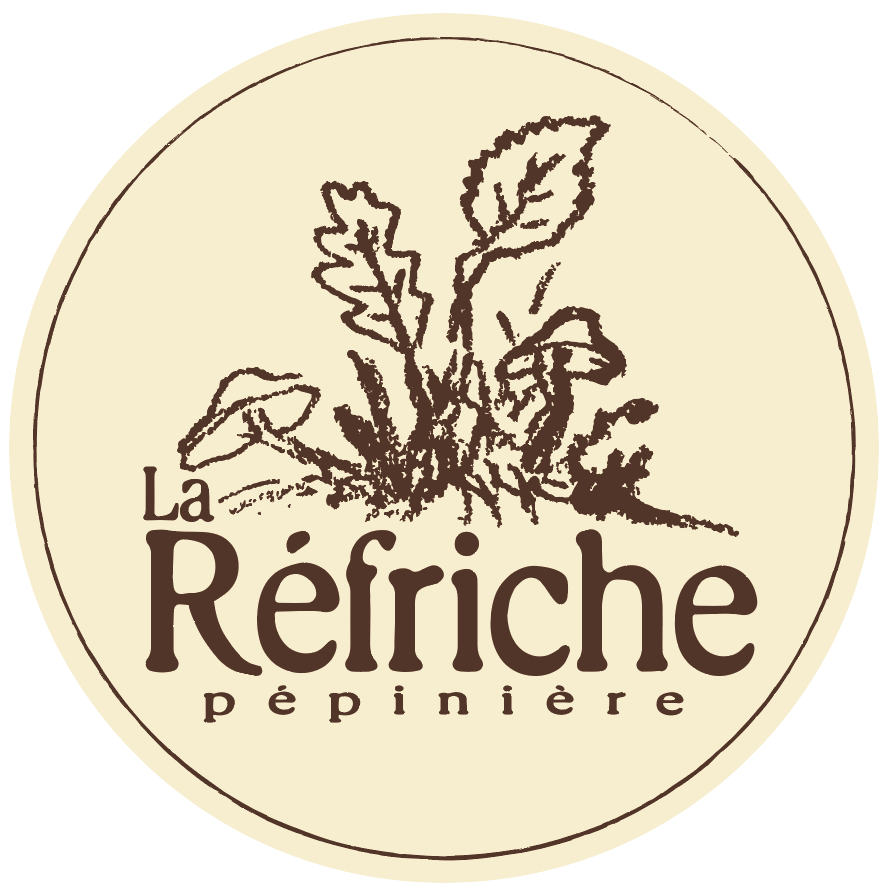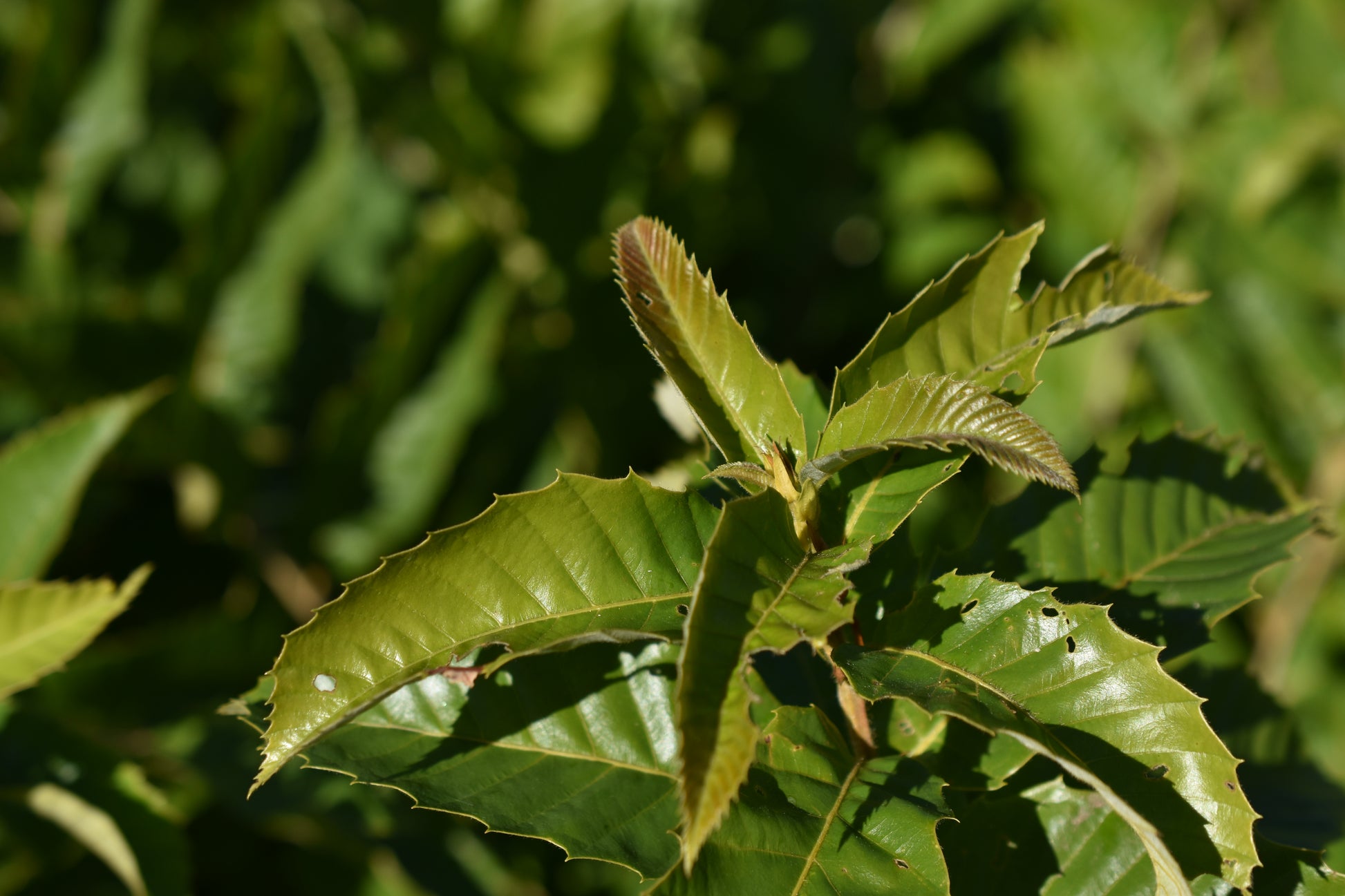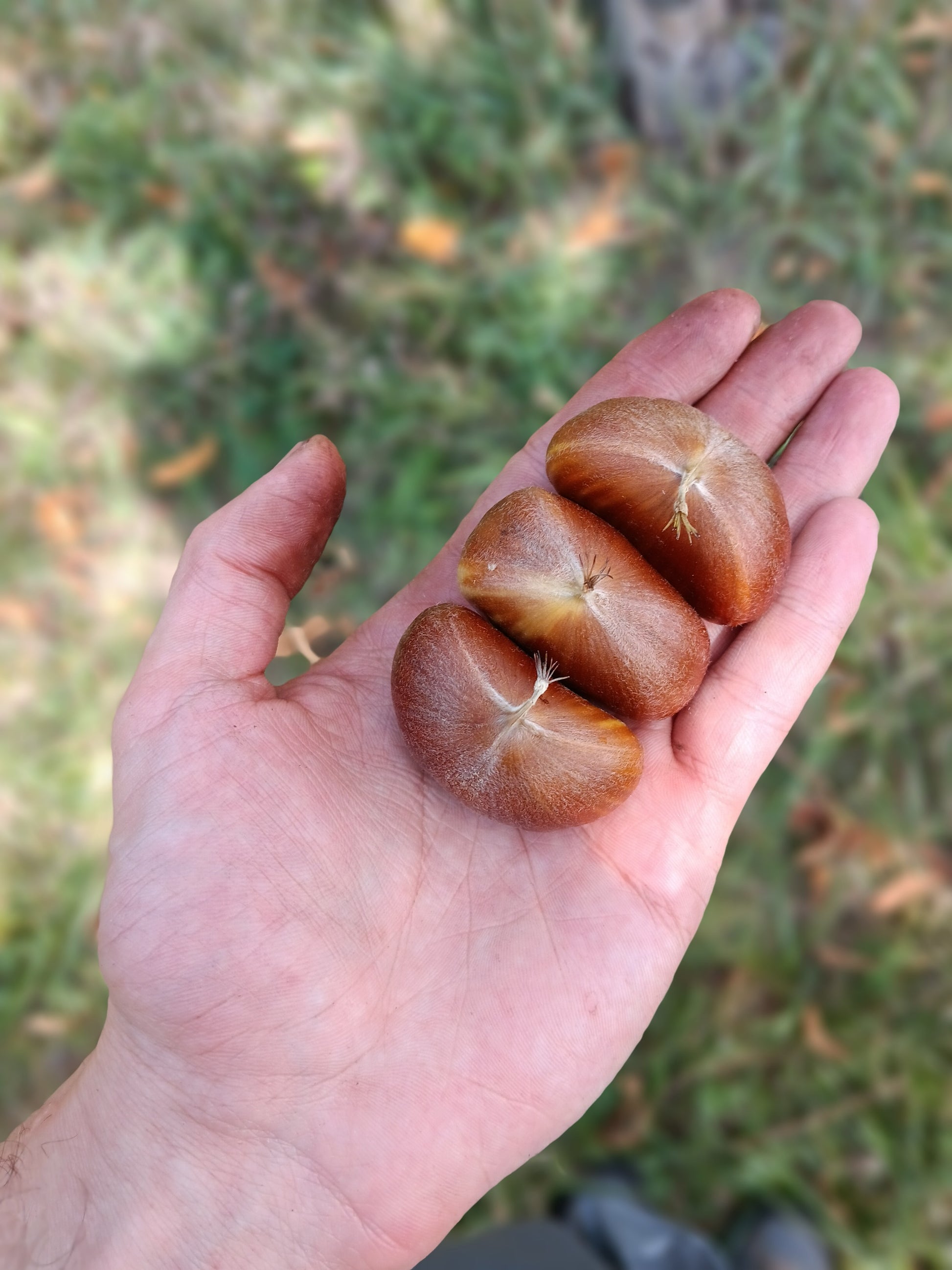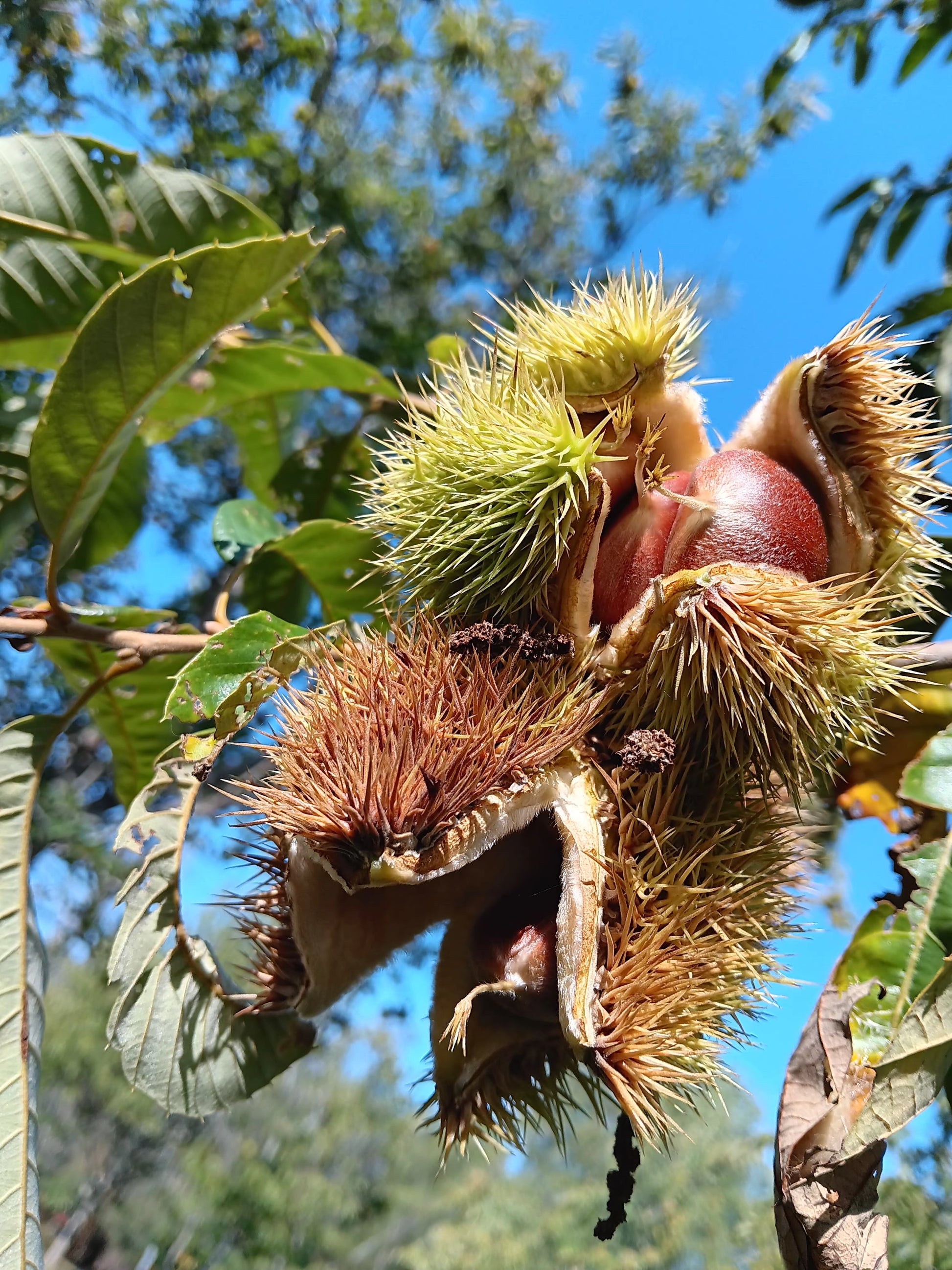Rabais
-
5 arbres = 10%
Entre amis.es c'est toujours mieux !
-
10 arbres = 15%
Amène toute ta famille !
-
25 arbres = 25%
Y'a du monde à messe !
La Réfriche Nursery
Hybrid chestnut (Castanea X spp.) - Zone 5b
Hybrid chestnut (Castanea X spp.) - Zone 5b
Couldn't load pickup availability
Hybrid chestnut tree – These trees are the result of crossing two different subspecies of chestnut tree. In general, hybrids represent a compromise between the genetic characteristics specific to each subspecies. They can therefore be classified according to their degree of affiliation with the lineage of each of their two parents.
In our view, crossbreeding between different subspecies of chestnut trees is the key to developing future hardy varieties adapted to Quebec's climate.
Here is a selection of our hybrid chestnut seedlings! The vast majority come from the best orchards and nurseries in the northeastern United States, but we also offer promising Quebec hybrids.
Biotope
Biotope
Biotopes suitable for growing hybrid chestnuts may vary depending on the seed source. In addition to the species used for hybridization, the different soils and climates where these crossbreeds were made will influence the environments conducive to their development.
Soil types
Chestnut trees of all species do not like soil where water accumulates. Transplanting into soil with a water table below 60 cm will result in the death of the plant by root asphyxia after 2 months. Being a mountain species, chestnut trees prefer aerated, acidic soil with a pH between 5 and 6. Chestnut can be grown in very acidic soils with a pH of 4.5, or even more basic soils with a pH of 6.5. The species best suited to alkaline soil types would probably be the European chestnut (Castanea Sativa), but then again, it should be hybrid chestnut seedlings (for hardiness and disease resistance) grown in alkaline soils.
Hardiness
Zone 4: Your best choices are pure American chestnuts. It is possible, but risky, to experiment with hybrid Castanea dentata x Castanea mollissima chestnut trees.
Zone 5: Your best choices are hybrid chestnut trees with Chinese and American genetics (Castanea dentata x Castanea mollissima) from sources whose mother plants are known to be hardy. Experimenting with hybrids from unknown sources is possible but risky.
Zone 6: Your best choices are pure Chinese chestnut trees or hybrid chestnut trees selected for the hardiness of the mother plants and the quality of their nuts. Generally speaking, the presence of American chestnut (Castanea dentata) increases the hardiness of crossbreeds. This is not a rule without exceptions. The most important thing is the seed source. Thus, a hybrid chestnut grown in Quebec will be better adapted to the Quebec climate than an American chestnut from Kentucky.
Disease resistance
The main disease affecting chestnut trees is Eastern chestnut blight (Cryphonectria parasitica). Pure American and European chestnut trees are not resistant to it, and typically die within three years of infection.
In addition, a second disease, phytophtora cinnamomi, a fungus-linked infection found in moist soils, affects European and American chestnut trees in the same way. Chinese and Japanese chestnut trees are resistant to this disease, hence the importance of hybridizing different chestnut species and planting hybrids.
For your information, a rainy season like 2023 can kill seedlings that are not resistant to phytophtora cinnamomi. We did not observe any problems in the majority of our seed sources, but 80% of the 530 G'ville roads died.
Wood
Wood
Chestnut wood may be of interest to cabinet-makers, but chestnut cannot currently compete with local nut tree species in terms of barrel quality.
Research is underway into the selection of chestnut species with wood that is vigorous and has a high apical demand, implying vigorous genetics in all species.
Size and shape
Size and shape
Chinese chestnut trees that grow in full sun without competition generally have little apical dominance.
Some hybrids, such as Szego, R2t5 and Layeroka, have better apical dominance.
As the populations are highly diversified, the vigor, habit and height of each of our seedlings will vary greatly.
We recommend planting the trees at 7m centers.
Pollination
Pollination
For effective pollination, we recommend planting at least three chestnut trees, with a maximum of one male-sterile chestnut.
Source
Source
Our selections are outstanding individuals worthy of propagation by seed from commercial orchards or university research centers.
Share
